We’re no longer the 100% horror site we used to be back when we still went by Brutal As Hell (sigh, remember those days? Anyone…?) However, the genre is still very close to our blackened hearts, and as such we’re as excited as any bloodthirsty Brit for the upcoming horror festival season. While the bulk of them come in the autumn (among them Abertoir, Celluloid Screams, Mayhem, Grimmfest), the party really gets started by London’s FrightFest on August Bank Holiday weekend, and in the eyes of many it’s the best horror fest of them all.
Having been sponsored by Film4 and the Horror Channel in years gone by, 2018 sees FrightFest take on a new principal sponsor in one of our long-time favourite media labels, Arrow Video; and the team have just announced the film line-up for the event.
Scroll on down for details (which, full disclosure, have been cut & pasted from their email). Arrow Video FrightFest weekend passes go on sale this Saturday, 30th June, and will be available exclusively online at this link.
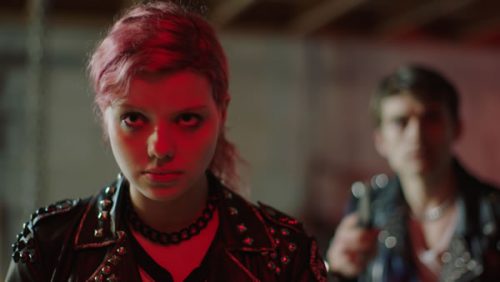 Remaining in the heart of London’s West End for its 19th edition, the world renowned horror and fantasy film festival turbo-charges into the Cineworld Leicester Square and The Prince Charles Cinema from Aug 23 – Aug 27 2018. Hosting a record-breaking seventy films, embracing eighteen countries and spanning six continents, this year’s line-up is a true celebration of the genre’s global popularity. The five-day fear-a-thon includes 20 World, 17 European and 22 UK Premieres.
Remaining in the heart of London’s West End for its 19th edition, the world renowned horror and fantasy film festival turbo-charges into the Cineworld Leicester Square and The Prince Charles Cinema from Aug 23 – Aug 27 2018. Hosting a record-breaking seventy films, embracing eighteen countries and spanning six continents, this year’s line-up is a true celebration of the genre’s global popularity. The five-day fear-a-thon includes 20 World, 17 European and 22 UK Premieres.
The opening night attraction is the UK premiere of THE RANGER (pictured). Jenn Wexler’s impressive directorial debut feature is an explosive, post-modern slasher, with a kick-ass punk soundtrack and a knock-out lead performance from Chloe Levin (The Transfiguration). Wexler, the first female director to open FrightFest, will be attending.
She said today: “We are honored and thrilled to be selected as this year’s opening night film. I made THE RANGER because I love punk rock and ‘80s horror. We can’t wait to share it with fans in the city where punk has its roots, at one of the world’s best genre festivals.”
Bringing the festival to a fitting conclusion is the UK premiere of Gaspar Noé’s CLIMAX, courtesy of our headline sponsors Arrow Video, which finds the incorrigible Irreversible wild child at the peak of his confrontational and hypnotically mesmerising powers. Based on true events, this throbbing whirling dervish is Noé’s Disco Inferno via Dante’s.
Over the years FrightFest has discovered and nurtured a host of talented directors and many are returning this year including Martyrs maestro Pascal Laugier with the UK premiere of his latest in the French Extreme annals INCIDENT IN A GHOST LAND, Paul Hyett with the World premiere of his medieval harrower HERETIKS, Colin Minihan with the UK premiere of romantic shocker WHAT KEEPS YOU ALIVE. Padraig Reynolds with the World premiere of his neo-slasher OPEN 24 HOURS and the fully-charged Turbo Kid trio François Simard, Anouk Whissell and Yoann-Karl Whissell bring us the European premiere of serial killer thriller SUMMER OF 84. Then there are World premieres for the Paz brothers scorching new take on the fable THE GOLEM, Tom Paton’s cosmic horror BLACK SITE, and Jon Knautz’s THE CLEANING LADY, starring his Goddess of Love muse Alexis Kendra.
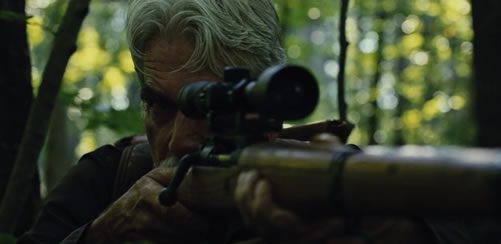 Plus, the line-up sees Saw maven Darren Lynn Bousman return with the European premiere of nunsploitation ST AGATHA, Insidious creator Leigh Whannell gifts us with a special preview of his super sci-fi thriller UPGRADE, Johnny Kervorkian appears with the European premiere of his Cronenbergian chiller AWAIT FURTHER INSTRUCTIONS, Rock video genius Joseph Kahn in back in the spotlight with the UK premiere of his extraordinary battle rap BODIED, director-turned-producer Lucky McKee with director Robert D. Krzykowski’s presents the European premiere of the superb THE MAN WHO KILLED HITLER AND THEN THE BIGFOOT (pictured), with Hollywood veteran Sam Elliott giving an award-winning performance.
Plus, the line-up sees Saw maven Darren Lynn Bousman return with the European premiere of nunsploitation ST AGATHA, Insidious creator Leigh Whannell gifts us with a special preview of his super sci-fi thriller UPGRADE, Johnny Kervorkian appears with the European premiere of his Cronenbergian chiller AWAIT FURTHER INSTRUCTIONS, Rock video genius Joseph Kahn in back in the spotlight with the UK premiere of his extraordinary battle rap BODIED, director-turned-producer Lucky McKee with director Robert D. Krzykowski’s presents the European premiere of the superb THE MAN WHO KILLED HITLER AND THEN THE BIGFOOT (pictured), with Hollywood veteran Sam Elliott giving an award-winning performance.
This year there are a record number of films, embracing zombie horror comedies, redemption thrillers, supernatural twisters, musicals, creature features, biographical dramas, reinvented slashers, gross animation and paranormal freakery. FrightFest has aimed to reflect that rich diversity with films such as Jerome Pikwane’s supernatural horror TOLKOLOSHE, the first festival entry from South Africa, which receives its World Premiere, John McPhail’s exuberant zombie musical ANNA AND THE APOCALYPSE, the UK premiere of Mike Mort’s gory animated shocker CHUCK STEEL: NIGHT OF THE TRAMPIRES. Caye Casas and Albert Pintó’s end of the world eye-opener KILLING GOD, Paul Raschid’s post-Brexit thriller WHITE CHAMBER, starring Shauna Macdonald and. Takeshi Sone’s LGBTQ stunner GHOST MASK: SCAR.
Then there is Matthew Holness’ much anticipated POSSUM, Jérémie Guez’s blazing A BLUEBIRD IN MY HEART, Andy Mitton’s unusual THE WITCH IN THE WINDOW, Linus de Paoli’s gut-wrenching A YOUNG MAN WITH HIGH POTENTIAL, Chris Sun’s Oz creature feature BOAR, Justin P. Lange’s intensely moving THE DARK, Evan Cecil’s splatterific LASSO, Owen Egerton’s bloody cheeky BLOOD FEST, Anthony Scott Burn’s sinister OUR HOUSE, Dominique Rocher’s galvanizing THE NIGHT EATS THE WORLD, Adam Marcus’ slay ride SECRET SANTA, Dean Devlin’s grueling BAD SAMARITAN, starring David Tennant, Trevor Stevens’ slyly futuristic ROCK STEADY ROW, Justin McConnell’s remarkable shape-shifting LIFECHANGER, Owen Long’s dark fantasy SEEDS, Nicolas Pesce’s Italian soundtack-tastic PIERCING and Franck Ribière’s stylish Grand Guignol recreation THE MOST ASSASSINATED WOMAN IN THE WORLD.
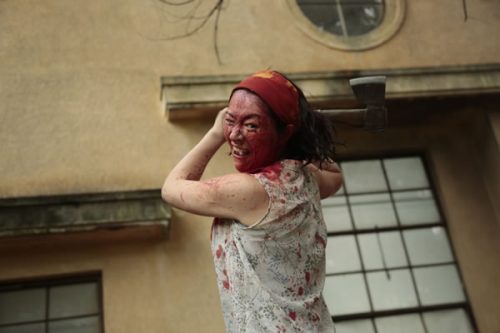 The cabinet of fear holds more…be prepared for Orson Oblowitz’s splatter revenge saga HELL IS WHERE THE HOME IS, starring Faruza Balk, Quinn, Lasher’s nightmarish HE’S OUT THERE, starring The Handmaid’s Tale’s Yvonne Strahovski, Tim van Dammen’s dimensionally hilarious MEGA TIME SQUAD, David Barker’s De Palma-esque PIMPED, Shin’ichirô Ueda’s one-take wonder ONE CUT OF THE DEAD (pictured), Giordano Giulivi’s black-and-white marvel THE LAPLACE’S DEMON, Abiel Bruhn and John Rocco’s three mothers saga THE NIGHT SITTER, Matt Mercer and Mike Testin’s unstable DEMENTIA PART II, Stewart Sparke’s action-packed BOOK OF MONSTERS, Sam Ashurst’s experimental 200-anniversary celebration FRANKENSTEIN’S CREATURE, Kristian A. Söderström’s tribute to VHS collectors everywhere VIDEOMAN, Marcus Hearn’s beautifully informative documentary HAMMER HORROR: THE WARNER BROS YEARS, Andre Gower’s look at The Monster Squad cult phenomenon, WOLFMAN’S GOT NARDS (reviewed here). Ante Novakovic’s Halloween-set crowd-pleaser actually titled FRIGHT FEST and there’s murder on the dance floor in Bernhard Pucher’s nightclubbed RAVERS, starring Georgia Hirst from Vikings.
The cabinet of fear holds more…be prepared for Orson Oblowitz’s splatter revenge saga HELL IS WHERE THE HOME IS, starring Faruza Balk, Quinn, Lasher’s nightmarish HE’S OUT THERE, starring The Handmaid’s Tale’s Yvonne Strahovski, Tim van Dammen’s dimensionally hilarious MEGA TIME SQUAD, David Barker’s De Palma-esque PIMPED, Shin’ichirô Ueda’s one-take wonder ONE CUT OF THE DEAD (pictured), Giordano Giulivi’s black-and-white marvel THE LAPLACE’S DEMON, Abiel Bruhn and John Rocco’s three mothers saga THE NIGHT SITTER, Matt Mercer and Mike Testin’s unstable DEMENTIA PART II, Stewart Sparke’s action-packed BOOK OF MONSTERS, Sam Ashurst’s experimental 200-anniversary celebration FRANKENSTEIN’S CREATURE, Kristian A. Söderström’s tribute to VHS collectors everywhere VIDEOMAN, Marcus Hearn’s beautifully informative documentary HAMMER HORROR: THE WARNER BROS YEARS, Andre Gower’s look at The Monster Squad cult phenomenon, WOLFMAN’S GOT NARDS (reviewed here). Ante Novakovic’s Halloween-set crowd-pleaser actually titled FRIGHT FEST and there’s murder on the dance floor in Bernhard Pucher’s nightclubbed RAVERS, starring Georgia Hirst from Vikings.
The popular raw talent strand ‘First Blood’ returns with four stellar titles: Kevin Chicken’s outstanding body modification shocker PERFECT SKIN, Aislinn Clark’s THE DEVIL’S DOORWAY, a terrifying depiction of devil possession, Harry Lindley’s computer virus techno thriller CTRL and Ben Kent’s F.U.B.A.R, which sees a stag party descend on a Zombie Apocalypse paintball weekend. What could go wrong? Here’s where you’ll find tomorrow’s names today, so good talent-spotting.
Another of FrightFest’s popular discovery strands is our spotlight on South American fantasy and this year highlights the scream of the crop. The one title that is currently scaring up a storm is Demian Rugna’s TERRIFIED, (you will be!). Then there’s the European premiere of Ezequiel Endelman and Leandro Montejano’s homage to Dario Argento, CRYSTAL EYES, the UK premiere of Gonzalo Calzada’s Argentine hit LUCIFERINA and the UK premiere of Gustavo Leonel Mendoza’s CULT OF TERROR, an engaging documentary look at all the Latin American and Spanish-speaking fantasy festivals.
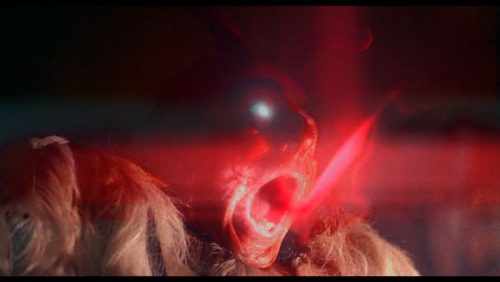 In 2008 FrightFest world-premiered Kerry Anne Mullaney’s The Dead Outside and since then have consistently championed female directors. This year is no exception. Apart from Jenn Wexler’s THE RANGER and Anouk Whissell’s involvement with SUMMER OF 84, we also showcase the European premiere of Mitzi Peirone’s visually dazzling BRAID, the European premiere of Aislinn Clark’s THE DEVIL’S DOORWAY (one of our ‘First Blood’ entries) and, by popular demand, a second screening of Issa López’s stunning Mexican fairytale TIGERS ARE NOT AFRAID. Nor must we forget Veronika Franz, Katrin Gebbe and Agnieszka Smoczynska’s wonderful contributions to the Euro-fable anthology THE FIELD GUIDE TO EVIL (pictured), which receives its UK premiere.
In 2008 FrightFest world-premiered Kerry Anne Mullaney’s The Dead Outside and since then have consistently championed female directors. This year is no exception. Apart from Jenn Wexler’s THE RANGER and Anouk Whissell’s involvement with SUMMER OF 84, we also showcase the European premiere of Mitzi Peirone’s visually dazzling BRAID, the European premiere of Aislinn Clark’s THE DEVIL’S DOORWAY (one of our ‘First Blood’ entries) and, by popular demand, a second screening of Issa López’s stunning Mexican fairytale TIGERS ARE NOT AFRAID. Nor must we forget Veronika Franz, Katrin Gebbe and Agnieszka Smoczynska’s wonderful contributions to the Euro-fable anthology THE FIELD GUIDE TO EVIL (pictured), which receives its UK premiere.
No FrightFest would be complete without a couple of shockers starring our First Lady of Fright, the incomparable Barbara Crampton. This year, everyone’s favourite genre icon is represented by the European premiere of Sonny Laguna and Tommy Wiklund’s fabulous reboot PUPPET MASTER: THE LITTLEST REICH and the UK premiere of Brad Baruh’s weird, wild and blood-soaked DEAD NIGHT.
Casting a truth-searing spotlight on FrightFest itself is Chris Collier’s documentary FRIGHTFEST: BENEATH THE DARK HEART OF CINEMA, which will receive its World premiere. Assembling a vast range of footage from every single past event and putting together dozens of interviews, the result is a warts-and-all look at the people behind FrightFest and what makes the UK’s best genre festival tick.
For many seasoned movie-lovers the much-missed Scala Cinema in London’s King’s Cross area was the repertory Mecca for the weirdest double-bills and electric audience atmospheres. It was also where Shock Around The Clock began, the origins of FrightFest Now fans can relive those golden days with a double-bill of classic exploitation chosen by the veteran programmer of the establishment herself, Jane Giles. Her book on the venue will be published in September by FAB Press and to celebrate FrightFest and Jane Giles will present Jeff Lieberman’s pulp science fiction BLUE SUNSHINE and Julien Temple’s Sex Pistols documdrama THE GREAT ROCK’N’ROLL SWINDLE, both to be shown in 35mm.
For your ears only! In a first for FrightFest, director Roxanne Benjamin (XX, Southbound) presents an exclusive screening of FINAL STOP, a must-hear horror short produced by Sennheiser and starring Phoebe Tonkin (The Originals). Shot entirely on smartphone, and recorded in full binaural audio using the AMBEO Smart Headset, the film is designed to be watched with headphones (which will be supplied), so audiences can immerse themselves in the story and its terrifying 3D soundscape.
There will also be a special screening of GHOST STORIES where co-writers/co-directors Jeremy Dyson and star Andy Nyman will host a live commentary and The Duke Mitchell Film Club is back with a hosted presentation of Sam Jones’ documentary LIFE AFTER FLASH. This is followed by the now notoriously popular DUKE MITCHELL PARTY, where the audience and invited special guests can expect all manner of madness guaranteed to kick off your Saturday late night in style.
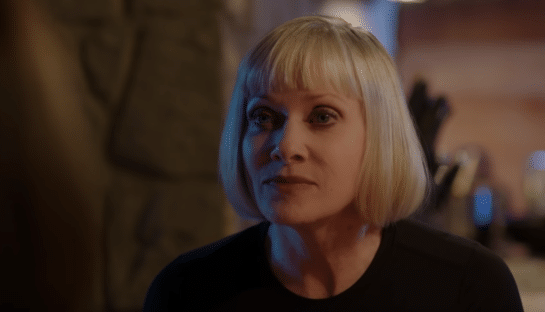 When a new horror movie lands with a painfully generic title and reports of a troubled journey to the final cut, this tends to leave you with pretty low expectations going in. Dead Night premiered at 2017’s Fantastic Fest, then known as Applecart; a title I’m glad they ditched, as a) it could easily be mistaken for Dustin Mills’ 2015 film of the same name, and b) it’s a pretty oblique title with no obvious relation to the content of the film itself. Reportedly this first screening didn’t go down so well, and the film has been significantly reworked for release, although as I didn’t see that initial cut I couldn’t say how extensive these revisions have been. However, I can comfortably declare that the end result is a very entertaining 85 minutes or so which should be warmly appreciated by old school horror fans. None of that ‘elevated genre’ crap here: this is classic, unmistakable, unabashed horror, just the way we’ve always liked it, and contrary to what certain critics might think, this doesn’t mean it sacrifices intellectual content for splattered brains.
When a new horror movie lands with a painfully generic title and reports of a troubled journey to the final cut, this tends to leave you with pretty low expectations going in. Dead Night premiered at 2017’s Fantastic Fest, then known as Applecart; a title I’m glad they ditched, as a) it could easily be mistaken for Dustin Mills’ 2015 film of the same name, and b) it’s a pretty oblique title with no obvious relation to the content of the film itself. Reportedly this first screening didn’t go down so well, and the film has been significantly reworked for release, although as I didn’t see that initial cut I couldn’t say how extensive these revisions have been. However, I can comfortably declare that the end result is a very entertaining 85 minutes or so which should be warmly appreciated by old school horror fans. None of that ‘elevated genre’ crap here: this is classic, unmistakable, unabashed horror, just the way we’ve always liked it, and contrary to what certain critics might think, this doesn’t mean it sacrifices intellectual content for splattered brains.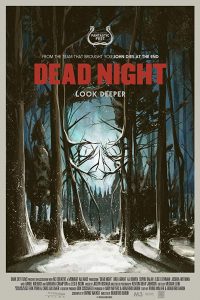
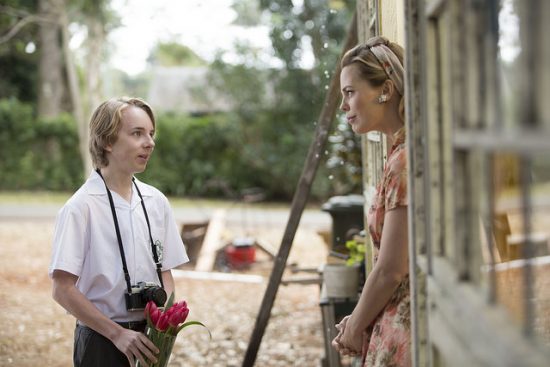 There’s a lot to be said for films that wear their heart on their sleeve; plenty of the most affecting and memorable titles in cinema are the work of filmmakers with an intensely personal vision. Writer-director Priscilla Cameron (making her feature debut here) certainly seems to be coming straight from the heart with The Butterfly Tree. Dedicated to the memory of a recently deceased friend, it’s a lovingly crafted blend of coming of age drama and paean to loss, with fantastical overtones, and something of a retro aesthetic. Alas, when it all comes totally from the heart at the expense of the head, this can obviously result in something imbalanced which winds up unsatisfactory on both levels; and so it is that, while The Butterfly Tree is frequently lovely to look at and often tugs on the heartstrings, scratch the surface and there’s a whole lot about it that feels off.
There’s a lot to be said for films that wear their heart on their sleeve; plenty of the most affecting and memorable titles in cinema are the work of filmmakers with an intensely personal vision. Writer-director Priscilla Cameron (making her feature debut here) certainly seems to be coming straight from the heart with The Butterfly Tree. Dedicated to the memory of a recently deceased friend, it’s a lovingly crafted blend of coming of age drama and paean to loss, with fantastical overtones, and something of a retro aesthetic. Alas, when it all comes totally from the heart at the expense of the head, this can obviously result in something imbalanced which winds up unsatisfactory on both levels; and so it is that, while The Butterfly Tree is frequently lovely to look at and often tugs on the heartstrings, scratch the surface and there’s a whole lot about it that feels off.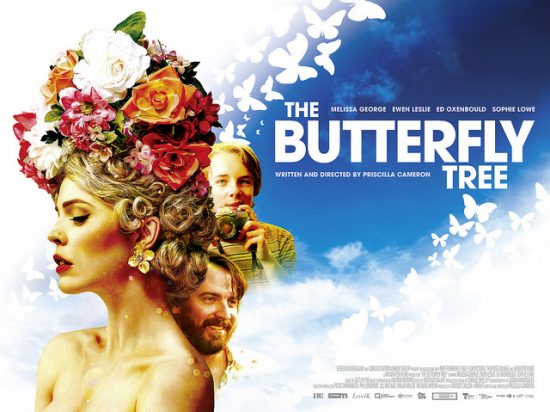
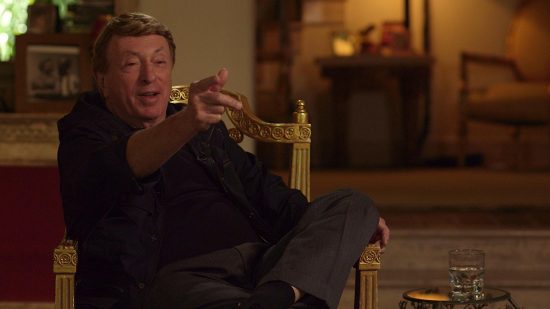 The annals of cult film history are littered with instantly recognisable names whose many illustrious works could be named at the drop of a hat by anyone with a reasonable knowledge of the material. However, there are plenty of other names who don’t have quite the same level of recognition, nor are any of their works quite so well known, but when you take a closer look at their CV it’s surprising to see just how enduring, prolific and influential they really were. Such is the case with Larry Cohen, a name that I for one have long been familiar with, yet without ever really having too great an awareness of his body of work. Like many horror fans, I knew of him primarily for It’s Alive, Q: The Winged Serpent and The Stuff, but as this documentary from director Steve Mitchell explores, there’s a whole lot more to Cohen’s career than those three horror hits.
The annals of cult film history are littered with instantly recognisable names whose many illustrious works could be named at the drop of a hat by anyone with a reasonable knowledge of the material. However, there are plenty of other names who don’t have quite the same level of recognition, nor are any of their works quite so well known, but when you take a closer look at their CV it’s surprising to see just how enduring, prolific and influential they really were. Such is the case with Larry Cohen, a name that I for one have long been familiar with, yet without ever really having too great an awareness of his body of work. Like many horror fans, I knew of him primarily for It’s Alive, Q: The Winged Serpent and The Stuff, but as this documentary from director Steve Mitchell explores, there’s a whole lot more to Cohen’s career than those three horror hits.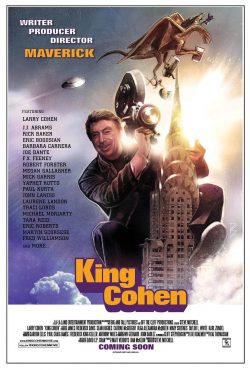 Naturally any documentary of this nature is going to go some way to romanticise its subject, with gushing praise for such illustrious peers as Martin Scorcese, John Landis and Joe Dante. There may be points where we feel Cohen’s significance to modern cinema is being overstated just a little, not least by Cohen himself, who proves the most entertaining interview subject of all. Still, the film doesn’t necessarily let him off scot-free on all counts when it comes to self-aggrandising; witness Cohen claiming to have made a deal with Fred Williamson, that any time he asked the actor to perform a stunt, he would first do the same stunt himself, which Williamson declares an outright lie. But hey, whether it’s true or not, it’s a fun story to hear, and it’s very hard not to feel some affection for the colourful raconteur recounting it.
Naturally any documentary of this nature is going to go some way to romanticise its subject, with gushing praise for such illustrious peers as Martin Scorcese, John Landis and Joe Dante. There may be points where we feel Cohen’s significance to modern cinema is being overstated just a little, not least by Cohen himself, who proves the most entertaining interview subject of all. Still, the film doesn’t necessarily let him off scot-free on all counts when it comes to self-aggrandising; witness Cohen claiming to have made a deal with Fred Williamson, that any time he asked the actor to perform a stunt, he would first do the same stunt himself, which Williamson declares an outright lie. But hey, whether it’s true or not, it’s a fun story to hear, and it’s very hard not to feel some affection for the colourful raconteur recounting it.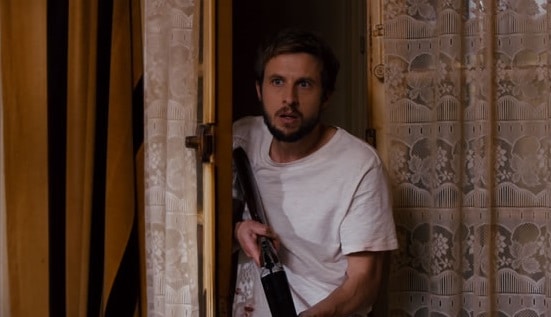 Zombies, as anyone who’s been following the trends of horror cinema so far this century will be aware, came dangerously close to over-saturation in the past decade. (I’d say ‘done to death,’ only… y’know.) However, the mid-2000s living dead frenzy in the wake of Shaun of the Dead, The Walking Dead, World War Z etc. has eased off significantly in recent years, so perhaps the time is right for a new movie that revisits the concept with fresh eyes. One new film that sets out to do just that is The Night Eats The World, an adaptation of Pit Agarmen’s novel
Zombies, as anyone who’s been following the trends of horror cinema so far this century will be aware, came dangerously close to over-saturation in the past decade. (I’d say ‘done to death,’ only… y’know.) However, the mid-2000s living dead frenzy in the wake of Shaun of the Dead, The Walking Dead, World War Z etc. has eased off significantly in recent years, so perhaps the time is right for a new movie that revisits the concept with fresh eyes. One new film that sets out to do just that is The Night Eats The World, an adaptation of Pit Agarmen’s novel 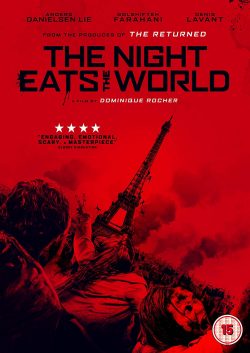
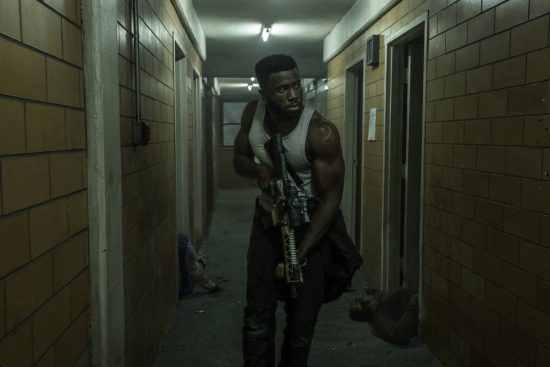 Any way you look at it, The Purge is one of the most distinctive cinematic franchises of the past decade. For one, in amongst the slew of films that are quite clearly horror yet inspire umpteen pseudo-high brow think pieces declaring they’re not horror really, The Purge is one property of which we might genuinely debate its genre status: it’s largely grounded, and might easily be classed as much in the action thriller category. It’s also unique among today’s low-budget, mainstream friendly shockers in that it has always been explicitly political, satirising the social climate in the US in extremely broad strokes. After the third entry, The Purge: Election Year (which, full disclosure, I haven’t seen at the time of writing) was carefully timed to coincide with the contentious 2016 US presidential election, this fourth instalment – the first not to be directed by series creator James DeMonaco, although he remains the writer – takes the prequel route, showing how the annual Purge, one night per year of 100% lawlessness, originally came to be.
Any way you look at it, The Purge is one of the most distinctive cinematic franchises of the past decade. For one, in amongst the slew of films that are quite clearly horror yet inspire umpteen pseudo-high brow think pieces declaring they’re not horror really, The Purge is one property of which we might genuinely debate its genre status: it’s largely grounded, and might easily be classed as much in the action thriller category. It’s also unique among today’s low-budget, mainstream friendly shockers in that it has always been explicitly political, satirising the social climate in the US in extremely broad strokes. After the third entry, The Purge: Election Year (which, full disclosure, I haven’t seen at the time of writing) was carefully timed to coincide with the contentious 2016 US presidential election, this fourth instalment – the first not to be directed by series creator James DeMonaco, although he remains the writer – takes the prequel route, showing how the annual Purge, one night per year of 100% lawlessness, originally came to be.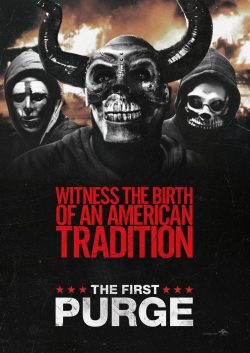
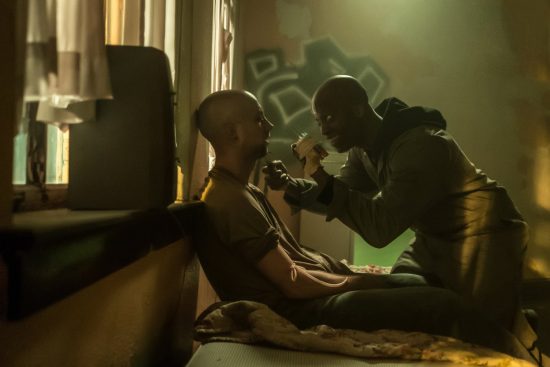 From the brief glimpse of ‘Black Lives Matter’ banners in an early montage, to a very on-the-nose reference to the current US president, to mobs of killers in Ku Klux Klan and Nazi uniforms, The First Purge never plays its hand close to its chest. Naturally this is going to leave a bad taste in the mouth of the easily offended, and rattle the cages of those people we’re supposed to call ‘alt-right’ now; and this was, of course, clearly the point. Also very much to the point is that the film ultimately sees the people of Staten Island put aside their differences and fight together for the greater good, with figures who might initially seem villainous proving their worth. From a sociopolitical perspective, this is a valuable message to all audiences irrespective of class or colour; from a film fan perspective, it’s evocative of cult classics ranging from Assault on Precinct 13 to Attack the Block. That said, it may be the diehard exploitation aficionados who feel the most short-changed by The First Purge, as in common with most of the films in the series to date (again bearing in mind I’ve missed one), the violence never gets quite so graphic or extreme as you might anticipate. Even so, the message is so heavy-handed that audiences are bound to feel bombarded enough as it is; and I suspect a large portion of the white audience may be pushed out of their comfort zone by how heavily the N-word is used.
From the brief glimpse of ‘Black Lives Matter’ banners in an early montage, to a very on-the-nose reference to the current US president, to mobs of killers in Ku Klux Klan and Nazi uniforms, The First Purge never plays its hand close to its chest. Naturally this is going to leave a bad taste in the mouth of the easily offended, and rattle the cages of those people we’re supposed to call ‘alt-right’ now; and this was, of course, clearly the point. Also very much to the point is that the film ultimately sees the people of Staten Island put aside their differences and fight together for the greater good, with figures who might initially seem villainous proving their worth. From a sociopolitical perspective, this is a valuable message to all audiences irrespective of class or colour; from a film fan perspective, it’s evocative of cult classics ranging from Assault on Precinct 13 to Attack the Block. That said, it may be the diehard exploitation aficionados who feel the most short-changed by The First Purge, as in common with most of the films in the series to date (again bearing in mind I’ve missed one), the violence never gets quite so graphic or extreme as you might anticipate. Even so, the message is so heavy-handed that audiences are bound to feel bombarded enough as it is; and I suspect a large portion of the white audience may be pushed out of their comfort zone by how heavily the N-word is used.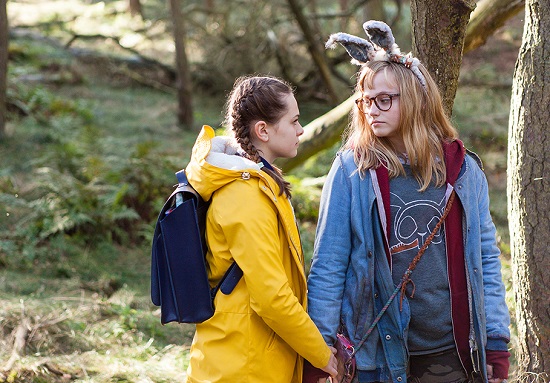 When you know the film you’re sitting down to is from the producers behind the Harry Potter films and is adapted from a comic book by the creators of cartoon series Ben 10, you might not anticipate something grounded, intimate and introspective. However, this is just what we get from I Kill Giants, feature debut from director Anders Walter, which stars Madison Wolfe as a middle school outsider in a sleepy coastal town who has dedicated her life to battling the hidden threat of giants – or so she seems to believe. It’s a sensitively handled blend of kitchen sink drama, coming of age angst and high fantasy, and about two years ago it might have seemed genuinely new and different. However, in the years since the original comic was published, we’ve had JA Bayona’s big screen adaptation of Patrick Ness’s novel A Monster Calls, which tackles similar subject matter to similar effect. While this doesn’t render I Kill Giants completely superfluous, it’s hard to deny that it might rob the film of some of its power.
When you know the film you’re sitting down to is from the producers behind the Harry Potter films and is adapted from a comic book by the creators of cartoon series Ben 10, you might not anticipate something grounded, intimate and introspective. However, this is just what we get from I Kill Giants, feature debut from director Anders Walter, which stars Madison Wolfe as a middle school outsider in a sleepy coastal town who has dedicated her life to battling the hidden threat of giants – or so she seems to believe. It’s a sensitively handled blend of kitchen sink drama, coming of age angst and high fantasy, and about two years ago it might have seemed genuinely new and different. However, in the years since the original comic was published, we’ve had JA Bayona’s big screen adaptation of Patrick Ness’s novel A Monster Calls, which tackles similar subject matter to similar effect. While this doesn’t render I Kill Giants completely superfluous, it’s hard to deny that it might rob the film of some of its power.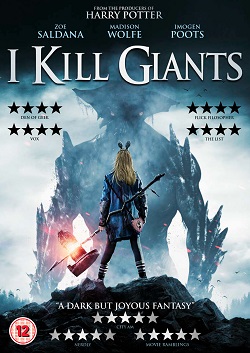
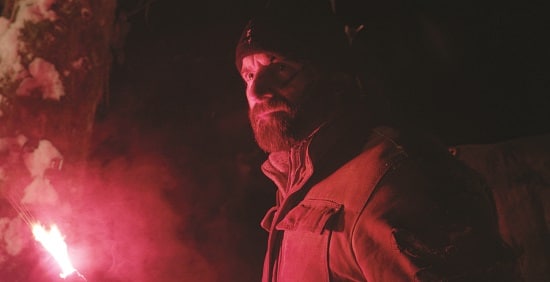 While I’m not sure we have enough Sasquatch movies for us to necessarily declare it a subgenre in its own right, it does seem that we’ve had a good few in recent years, from the excess-all-areas grindhouse of Dear God No! to the more grounded found footage of Willow Creek. Now, writer-director Justin Lee has taken on Bigfoot in Big Legend, a low-key yet high-ambition backwoods survivalist drama with a hearty side order of creature feature carnage. As with so much low-budget indie horror, it’s a film that could have used a fair bit more money to really do the material justice, but happily Big Legend has got enough of what really counts to work, even if it might not be the most striking or memorable film of its sort you’re ever likely to see.
While I’m not sure we have enough Sasquatch movies for us to necessarily declare it a subgenre in its own right, it does seem that we’ve had a good few in recent years, from the excess-all-areas grindhouse of Dear God No! to the more grounded found footage of Willow Creek. Now, writer-director Justin Lee has taken on Bigfoot in Big Legend, a low-key yet high-ambition backwoods survivalist drama with a hearty side order of creature feature carnage. As with so much low-budget indie horror, it’s a film that could have used a fair bit more money to really do the material justice, but happily Big Legend has got enough of what really counts to work, even if it might not be the most striking or memorable film of its sort you’re ever likely to see.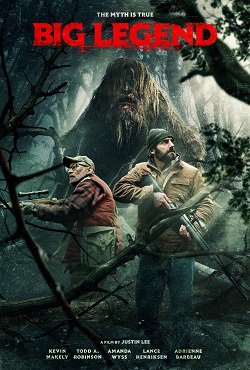 Big Legend is Justin Lee’s first feature (though his IMDb shows he’s been regularly directing TV episodes and shorts since 2012), and it certainly suggests he’s an ambitious filmmaker with a good eye. He would also seem to have a good way with actors, and has a great leading man in Makely, who convinces as both grief-stricken widower (or whatever the equivalent of that is for fiancé) and a skilled outdoorsman. Intriguingly, the press release notes the film is based at least in part on a real life experience of Makely’s, although I don’t know the details there; certainly one would hope things didn’t quite so life-and-death for the actor in reality, even if there was a Sasquatch involved.
Big Legend is Justin Lee’s first feature (though his IMDb shows he’s been regularly directing TV episodes and shorts since 2012), and it certainly suggests he’s an ambitious filmmaker with a good eye. He would also seem to have a good way with actors, and has a great leading man in Makely, who convinces as both grief-stricken widower (or whatever the equivalent of that is for fiancé) and a skilled outdoorsman. Intriguingly, the press release notes the film is based at least in part on a real life experience of Makely’s, although I don’t know the details there; certainly one would hope things didn’t quite so life-and-death for the actor in reality, even if there was a Sasquatch involved. Remaining in the heart of London’s West End for its 19th edition, the world renowned horror and fantasy film festival turbo-charges into the Cineworld Leicester Square and The Prince Charles Cinema from Aug 23 – Aug 27 2018. Hosting a record-breaking seventy films, embracing eighteen countries and spanning six continents, this year’s line-up is a true celebration of the genre’s global popularity. The five-day fear-a-thon includes 20 World, 17 European and 22 UK Premieres.
Remaining in the heart of London’s West End for its 19th edition, the world renowned horror and fantasy film festival turbo-charges into the Cineworld Leicester Square and The Prince Charles Cinema from Aug 23 – Aug 27 2018. Hosting a record-breaking seventy films, embracing eighteen countries and spanning six continents, this year’s line-up is a true celebration of the genre’s global popularity. The five-day fear-a-thon includes 20 World, 17 European and 22 UK Premieres. Plus, the line-up sees Saw maven Darren Lynn Bousman return with the European premiere of nunsploitation ST AGATHA, Insidious creator Leigh Whannell gifts us with a special preview of his super sci-fi thriller UPGRADE, Johnny Kervorkian appears with the European premiere of his Cronenbergian chiller AWAIT FURTHER INSTRUCTIONS, Rock video genius Joseph Kahn in back in the spotlight with the UK premiere of his extraordinary battle rap BODIED, director-turned-producer Lucky McKee with director Robert D. Krzykowski’s presents the European premiere of the superb THE MAN WHO KILLED HITLER AND THEN THE BIGFOOT (pictured), with Hollywood veteran Sam Elliott giving an award-winning performance.
Plus, the line-up sees Saw maven Darren Lynn Bousman return with the European premiere of nunsploitation ST AGATHA, Insidious creator Leigh Whannell gifts us with a special preview of his super sci-fi thriller UPGRADE, Johnny Kervorkian appears with the European premiere of his Cronenbergian chiller AWAIT FURTHER INSTRUCTIONS, Rock video genius Joseph Kahn in back in the spotlight with the UK premiere of his extraordinary battle rap BODIED, director-turned-producer Lucky McKee with director Robert D. Krzykowski’s presents the European premiere of the superb THE MAN WHO KILLED HITLER AND THEN THE BIGFOOT (pictured), with Hollywood veteran Sam Elliott giving an award-winning performance. The cabinet of fear holds more…be prepared for Orson Oblowitz’s splatter revenge saga HELL IS WHERE THE HOME IS, starring Faruza Balk, Quinn, Lasher’s nightmarish HE’S OUT THERE, starring The Handmaid’s Tale’s Yvonne Strahovski, Tim van Dammen’s dimensionally hilarious MEGA TIME SQUAD, David Barker’s De Palma-esque PIMPED, Shin’ichirô Ueda’s one-take wonder ONE CUT OF THE DEAD (pictured), Giordano Giulivi’s black-and-white marvel THE LAPLACE’S DEMON, Abiel Bruhn and John Rocco’s three mothers saga THE NIGHT SITTER, Matt Mercer and Mike Testin’s unstable DEMENTIA PART II, Stewart Sparke’s action-packed BOOK OF MONSTERS, Sam Ashurst’s experimental 200-anniversary celebration FRANKENSTEIN’S CREATURE, Kristian A. Söderström’s tribute to VHS collectors everywhere VIDEOMAN, Marcus Hearn’s beautifully informative documentary HAMMER HORROR: THE WARNER BROS YEARS, Andre Gower’s look at The Monster Squad cult phenomenon, WOLFMAN’S GOT NARDS
The cabinet of fear holds more…be prepared for Orson Oblowitz’s splatter revenge saga HELL IS WHERE THE HOME IS, starring Faruza Balk, Quinn, Lasher’s nightmarish HE’S OUT THERE, starring The Handmaid’s Tale’s Yvonne Strahovski, Tim van Dammen’s dimensionally hilarious MEGA TIME SQUAD, David Barker’s De Palma-esque PIMPED, Shin’ichirô Ueda’s one-take wonder ONE CUT OF THE DEAD (pictured), Giordano Giulivi’s black-and-white marvel THE LAPLACE’S DEMON, Abiel Bruhn and John Rocco’s three mothers saga THE NIGHT SITTER, Matt Mercer and Mike Testin’s unstable DEMENTIA PART II, Stewart Sparke’s action-packed BOOK OF MONSTERS, Sam Ashurst’s experimental 200-anniversary celebration FRANKENSTEIN’S CREATURE, Kristian A. Söderström’s tribute to VHS collectors everywhere VIDEOMAN, Marcus Hearn’s beautifully informative documentary HAMMER HORROR: THE WARNER BROS YEARS, Andre Gower’s look at The Monster Squad cult phenomenon, WOLFMAN’S GOT NARDS  In 2008 FrightFest world-premiered Kerry Anne Mullaney’s The Dead Outside and since then have consistently championed female directors. This year is no exception. Apart from Jenn Wexler’s THE RANGER and Anouk Whissell’s involvement with SUMMER OF 84, we also showcase the European premiere of Mitzi Peirone’s visually dazzling BRAID, the European premiere of Aislinn Clark’s THE DEVIL’S DOORWAY (one of our ‘First Blood’ entries) and, by popular demand, a second screening of Issa López’s stunning Mexican fairytale TIGERS ARE NOT AFRAID. Nor must we forget Veronika Franz, Katrin Gebbe and Agnieszka Smoczynska’s wonderful contributions to the Euro-fable anthology THE FIELD GUIDE TO EVIL (pictured), which receives its UK premiere.
In 2008 FrightFest world-premiered Kerry Anne Mullaney’s The Dead Outside and since then have consistently championed female directors. This year is no exception. Apart from Jenn Wexler’s THE RANGER and Anouk Whissell’s involvement with SUMMER OF 84, we also showcase the European premiere of Mitzi Peirone’s visually dazzling BRAID, the European premiere of Aislinn Clark’s THE DEVIL’S DOORWAY (one of our ‘First Blood’ entries) and, by popular demand, a second screening of Issa López’s stunning Mexican fairytale TIGERS ARE NOT AFRAID. Nor must we forget Veronika Franz, Katrin Gebbe and Agnieszka Smoczynska’s wonderful contributions to the Euro-fable anthology THE FIELD GUIDE TO EVIL (pictured), which receives its UK premiere.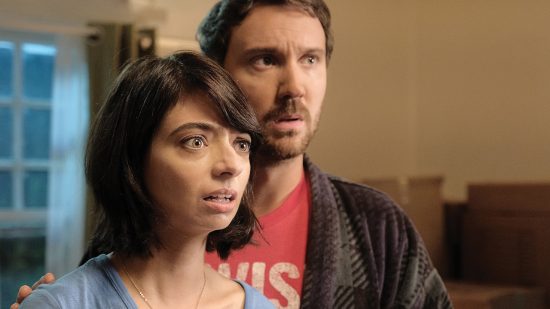 If a filmmaker wants their work to have an air of eccentricity about it, a sixteen word title isn’t a bad start. After all, it worked with The Englishman Who Went Up A Hill But Came Down A Mountain (shit, that’s a whole seventeen words if we count those ‘a’s), so who’s to say it can’t work again, right? Happily, there’s a lot more to Seven Stages To Achieve Eternal Bliss By Passing Through The Gateway Chosen By The Holy Storsh than a mouthful of a name. For one, it scores some pretty substantial fan interest points thanks to the presence of two of the most revered figures of the moment: Taika Waititi, fresh from his career-changing work as director of Marvel’s Thor: Ragnarok, and Dan Harmon, co-creator and star of the animated cult sensation Rick and Morty. However, while both Waititi and Harmon have significant roles to play in Seven Stages (as it will hitherto be referred – come on, you know you don’t want to read all that any more than I want to type all that every single time), it should be stressed that they are both very much supporting figures in a quirky, genre-bending black comedy centred on a young couple who inadvertently find themselves caught up in a bizarre religious cult.
If a filmmaker wants their work to have an air of eccentricity about it, a sixteen word title isn’t a bad start. After all, it worked with The Englishman Who Went Up A Hill But Came Down A Mountain (shit, that’s a whole seventeen words if we count those ‘a’s), so who’s to say it can’t work again, right? Happily, there’s a lot more to Seven Stages To Achieve Eternal Bliss By Passing Through The Gateway Chosen By The Holy Storsh than a mouthful of a name. For one, it scores some pretty substantial fan interest points thanks to the presence of two of the most revered figures of the moment: Taika Waititi, fresh from his career-changing work as director of Marvel’s Thor: Ragnarok, and Dan Harmon, co-creator and star of the animated cult sensation Rick and Morty. However, while both Waititi and Harmon have significant roles to play in Seven Stages (as it will hitherto be referred – come on, you know you don’t want to read all that any more than I want to type all that every single time), it should be stressed that they are both very much supporting figures in a quirky, genre-bending black comedy centred on a young couple who inadvertently find themselves caught up in a bizarre religious cult.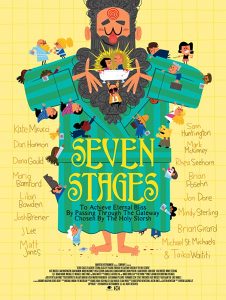
 If I’ve learned one thing from all my years following contemporary horror cinema (listen to me, making it sound like a tour of duty), it’s that you should never write off any one subgenre or motif. Every time you’re certain that something’s been done to death, along comes a new movie which, against all odds, manages to make it work again. Such is the case with Gags, the feature debut of writer-director Adam Krause (who previously shot the story as a short in 2016). One glance at the film’s key promotional image – a creepy clown holding balloons – and you’d be forgiven for assuming Gags is nothing more than a lazy It rip-off. Learning that it’s also a found footage movie probably won’t inspire much more confidence there. However, if you can put such old bugbears to rest, Gags proves to be a far better, more intriguing and compelling film than you might anticipate.
If I’ve learned one thing from all my years following contemporary horror cinema (listen to me, making it sound like a tour of duty), it’s that you should never write off any one subgenre or motif. Every time you’re certain that something’s been done to death, along comes a new movie which, against all odds, manages to make it work again. Such is the case with Gags, the feature debut of writer-director Adam Krause (who previously shot the story as a short in 2016). One glance at the film’s key promotional image – a creepy clown holding balloons – and you’d be forgiven for assuming Gags is nothing more than a lazy It rip-off. Learning that it’s also a found footage movie probably won’t inspire much more confidence there. However, if you can put such old bugbears to rest, Gags proves to be a far better, more intriguing and compelling film than you might anticipate.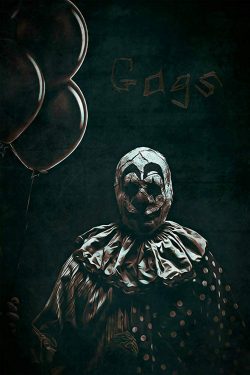
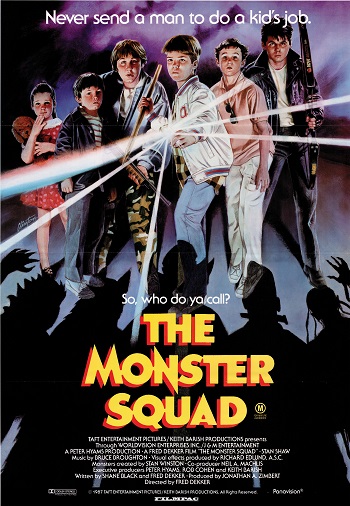 The Monster Squad holds a distinctive and relatively unique position in horror fandom. Released in 1987 back when it was still pretty early days for the PG-13 certificate, it was a box office bomb, and neither its director nor the bulk of its cast went on to do much of note. However, as with a great many films that initially failed to find an audience theatrically, its reputation grew with time thanks to home video and cable television, and in the late 1980s/early 1990s it became a major gateway movie for a generation of viewers just discovering horror. And yet, by the mid-2000s The Monster Squad seemed to have been forgotten, until an impromptu screening in Austin and an ensuing wave of fan interest online saw it granted a DVD release, just in time for the 20th anniversary. Eleven years on from that, The Monster Squad seems to be widely embraced as a bona fide 1980s classic – although for whatever reason, it’s still failed to get a DVD or Blu-ray release in the UK (come on distributors, surely one of you can sort this out).
The Monster Squad holds a distinctive and relatively unique position in horror fandom. Released in 1987 back when it was still pretty early days for the PG-13 certificate, it was a box office bomb, and neither its director nor the bulk of its cast went on to do much of note. However, as with a great many films that initially failed to find an audience theatrically, its reputation grew with time thanks to home video and cable television, and in the late 1980s/early 1990s it became a major gateway movie for a generation of viewers just discovering horror. And yet, by the mid-2000s The Monster Squad seemed to have been forgotten, until an impromptu screening in Austin and an ensuing wave of fan interest online saw it granted a DVD release, just in time for the 20th anniversary. Eleven years on from that, The Monster Squad seems to be widely embraced as a bona fide 1980s classic – although for whatever reason, it’s still failed to get a DVD or Blu-ray release in the UK (come on distributors, surely one of you can sort this out).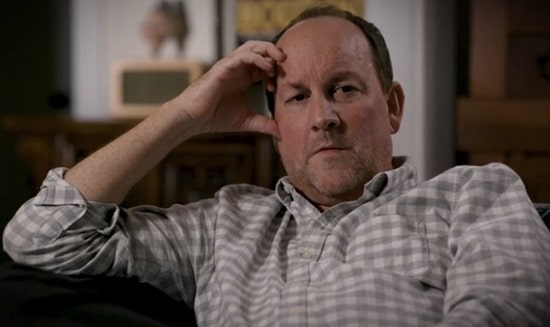 When I say just about everyone… for anyone who loves The Monster Squad as much as I do, there may well be a particularly bittersweet tang to Fred Dekker’s contributions to Wolfman’s Got Nards. The director is rather less guarded here than he was in Monster Squad Forever; where before he had gently hinted at problems with executive producer Peter Hyams, here he declares outright that Hyams came close to getting him fired in the first week of production. However, things get rather closer to the bone when Dekker contemplates his own feelings about the film all these years later, for while he seems sincere in declaring it his best film and appreciating the fandom it enjoys, he also makes it clear that it’s not all happy memories for him. After all, the film’s commercial failure killed his career overnight, and his one subsequent film RoboCop 3 only served to hammer the last nails in (although he also helmed a pretty good Tales From The Crypt episode in the interim). I know I’m not alone in lamenting the fact that Dekker was never able to enjoy the high profile directing career he was clearly capable of, and as such one can hardly blame him for his mixed feelings.
When I say just about everyone… for anyone who loves The Monster Squad as much as I do, there may well be a particularly bittersweet tang to Fred Dekker’s contributions to Wolfman’s Got Nards. The director is rather less guarded here than he was in Monster Squad Forever; where before he had gently hinted at problems with executive producer Peter Hyams, here he declares outright that Hyams came close to getting him fired in the first week of production. However, things get rather closer to the bone when Dekker contemplates his own feelings about the film all these years later, for while he seems sincere in declaring it his best film and appreciating the fandom it enjoys, he also makes it clear that it’s not all happy memories for him. After all, the film’s commercial failure killed his career overnight, and his one subsequent film RoboCop 3 only served to hammer the last nails in (although he also helmed a pretty good Tales From The Crypt episode in the interim). I know I’m not alone in lamenting the fact that Dekker was never able to enjoy the high profile directing career he was clearly capable of, and as such one can hardly blame him for his mixed feelings.